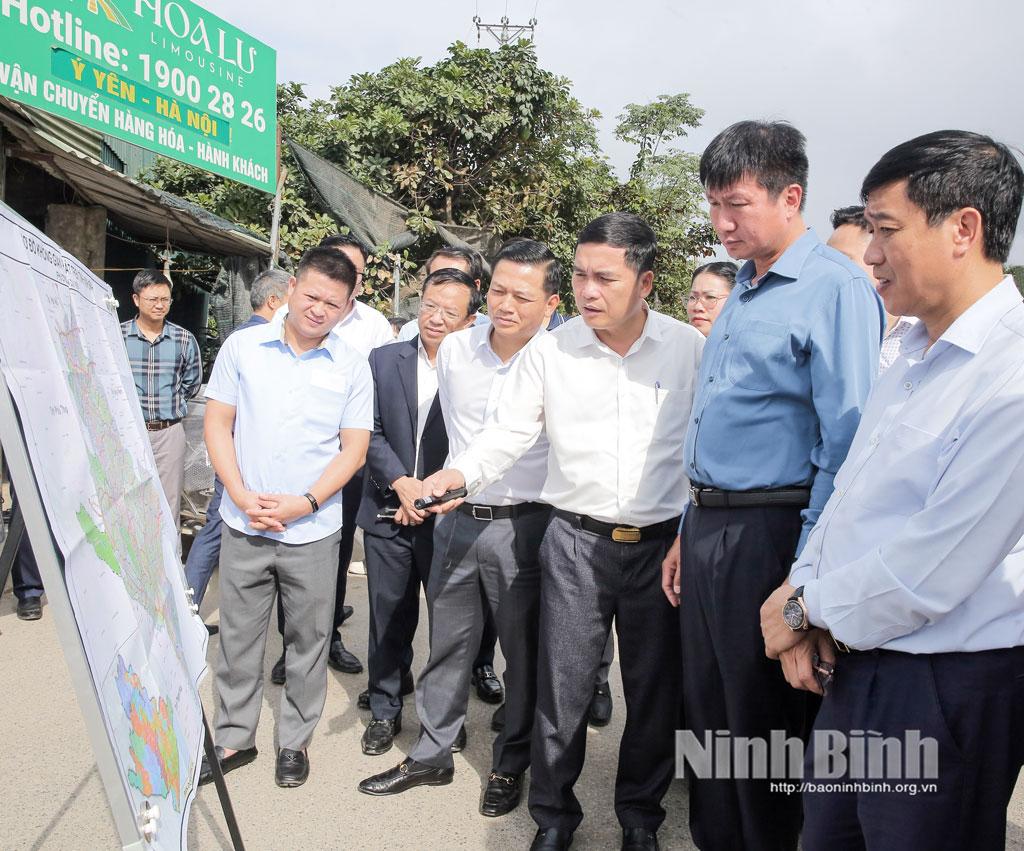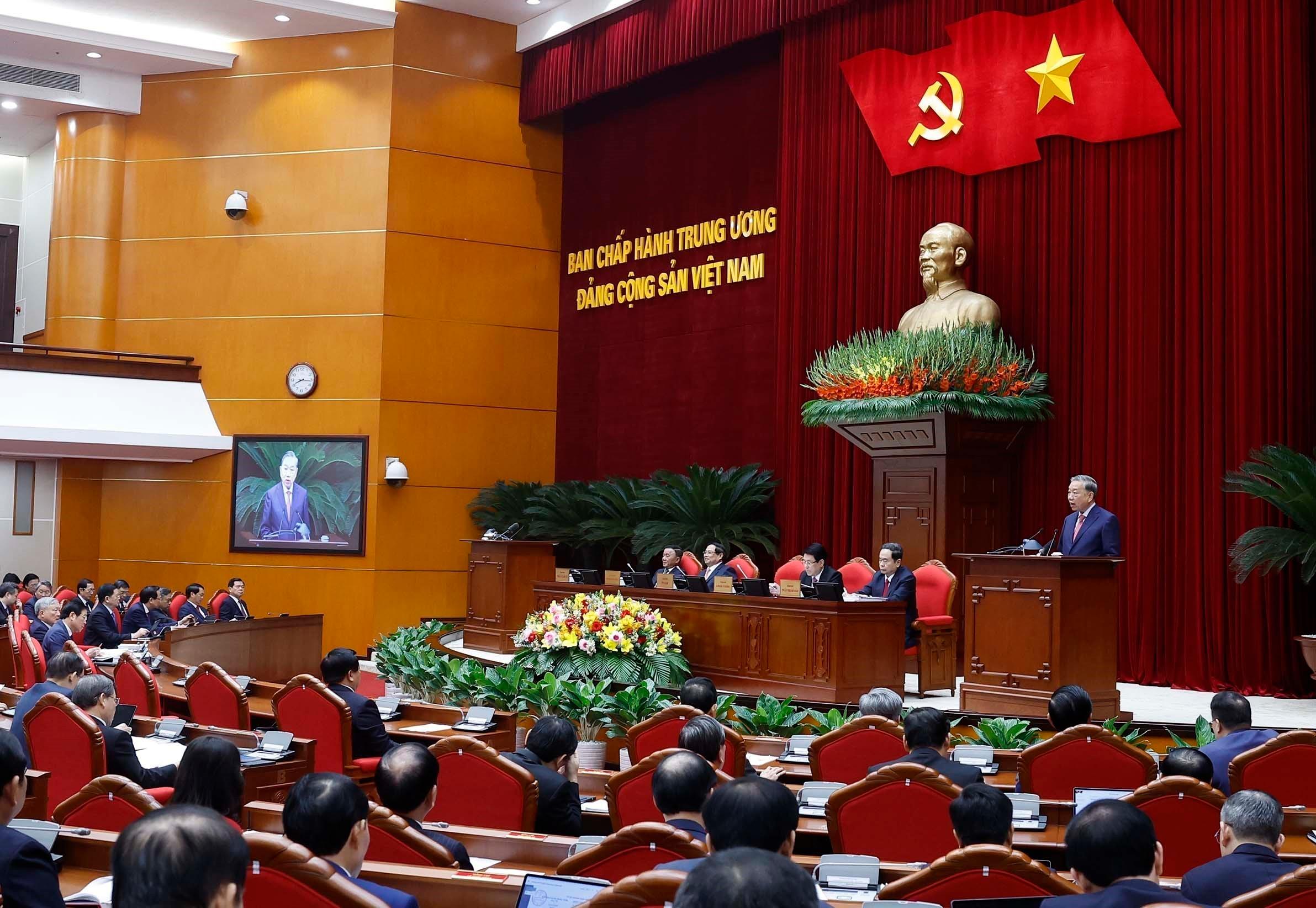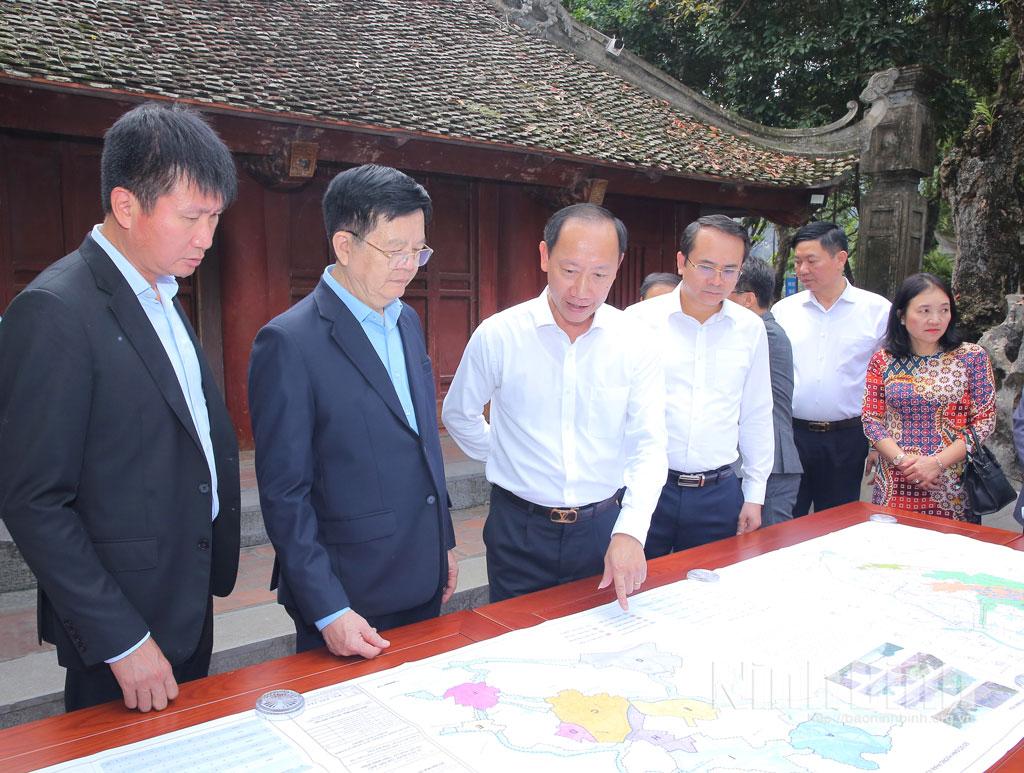Newly-merged Ninh Binh province expected to become new growth pole
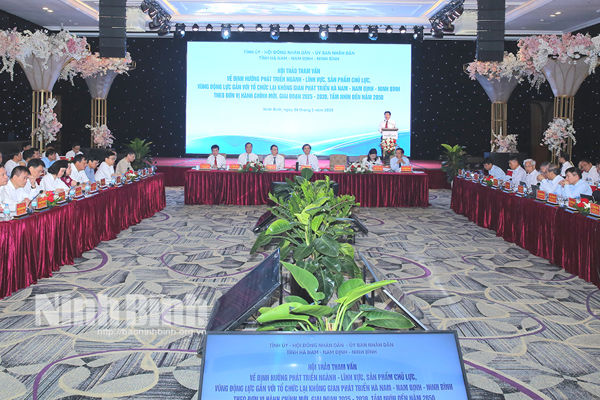
A seminar titled "Consultation on the development orientation of industries - fields, key products, and dynamic regions associated with the reorganisation of the development space of Ha Nam - Nam Dinh - Ninh Binh according to the new administrative unit for the period of 2025 - 2030, with a vision to 2050" was held in Hoa Lu city, Ninh Binh province, on May 24 with the participation of many leaders of the three provinces, experts, scientists, businesses, and investors.
Mergence to expand development space
Speaking at the opening of the seminar, Secretary of the Ha Nam Provincial Party Committee Truong Quoc Huy said that in Resolution No. 60-NQ/TW dated April 12, 2025, the 11th Meeting of the 13th Party Central Committee agreed to merge Ha Nam, Ninh Binh and Nam Dinh provinces into Ninh Binh province, with the political and administrative centre located in Ninh Binh province.
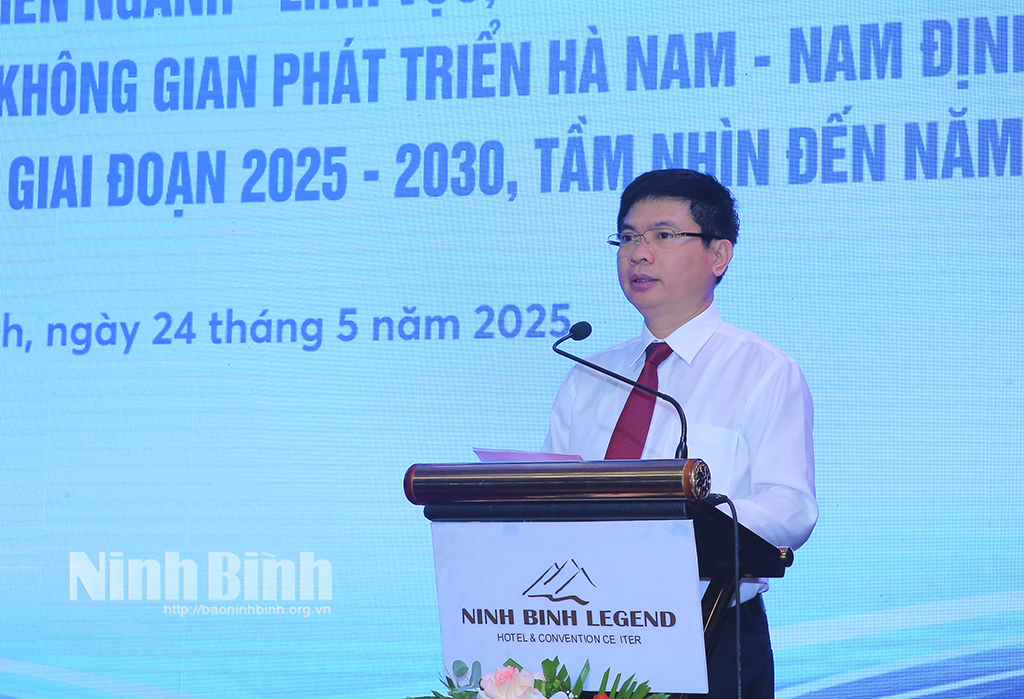
The mergence of Ninh Binh, Nam Dinh, and Ha Nam provinces compensates for limitations in terms of area and population, contributes to streamlining the apparatus, and creates positive changes in state administrative management. At the same time, it contributes to increasing the economic scale, enhancing competitiveness, attracting investment, and maximising the potential and strengths of economic sectors such as tourism, industry, cultural industry associated with heritage conservation, he said.
In particular, the expansion of the marine economic development space is considered a bright spot in the regional development orientation.
Huy affirmed: “The contributions of delegates, economic experts, and scientists will significantly contribute to the development orientation of industries - fields, key products associated with spatial planning, the dynamic development region of Ha Nam - Nam Dinh - Ninh Binh according to the new administrative unit.”
Potential of merged region
The seminar introduction report presented by Secretary of the Nam Dinh Provincial Party Committee Dang Khanh Toan clarified the outstanding achievements of the three provinces in socio-economic development in recent years.
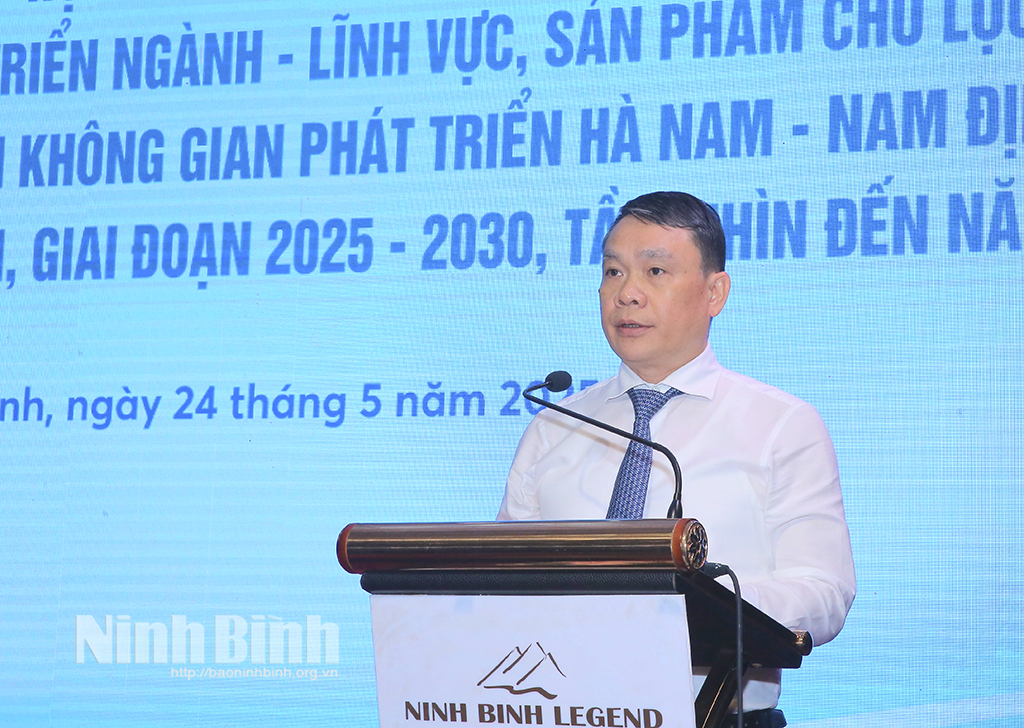
The three provinces have had many bright spots in innovating growth models, proactively renewing traditional growth drivers and developing new drivers based on high-tech industry, digital economy, creative economy, circular economy and heritage economy.
By the end of 2024, the economic scale of the whole region is estimated to reach over 310.28 trillion VND, ranking 11th out of 34 provinces and cities after the mergence; budget revenue reaches 55.01 trillion VND, ranking 6th out of 34 provinces and cities; total export turnover reaches 17.56 billion USD, accounting for 4.3% of the total export turnover of the whole country. This is evidence of the increasingly prominent role of the region in the national economic structure.
Agriculture has strongly shifted towards organic and circular models. The new-style rural construction and urban development programme has achieved many breakthroughs, while infrastructure has been invested synchronously and the rural life is approaching urban areas.
Many new economic models such as e-commerce, night-time economy, community tourism, creative craft villages, indigenous agriculture are developing rapidly.
Green industries and digital technology have made a clear mark: green materials, information technology in Nam Dinh; mechanical - automobile, event organisation - tourism in Ninh Binh; electronics industry, entertainment, supporting industry in Ha Nam.
Associate Professor, Dr. Tran Dinh Thien said that the three provinces are developing rapidly and need to turn pressure into motivation. It is necessary to have a systematic, long-term planning approach, while investment should be poured into developing industrial infrastructure, high technology and marine economic zones, he said.
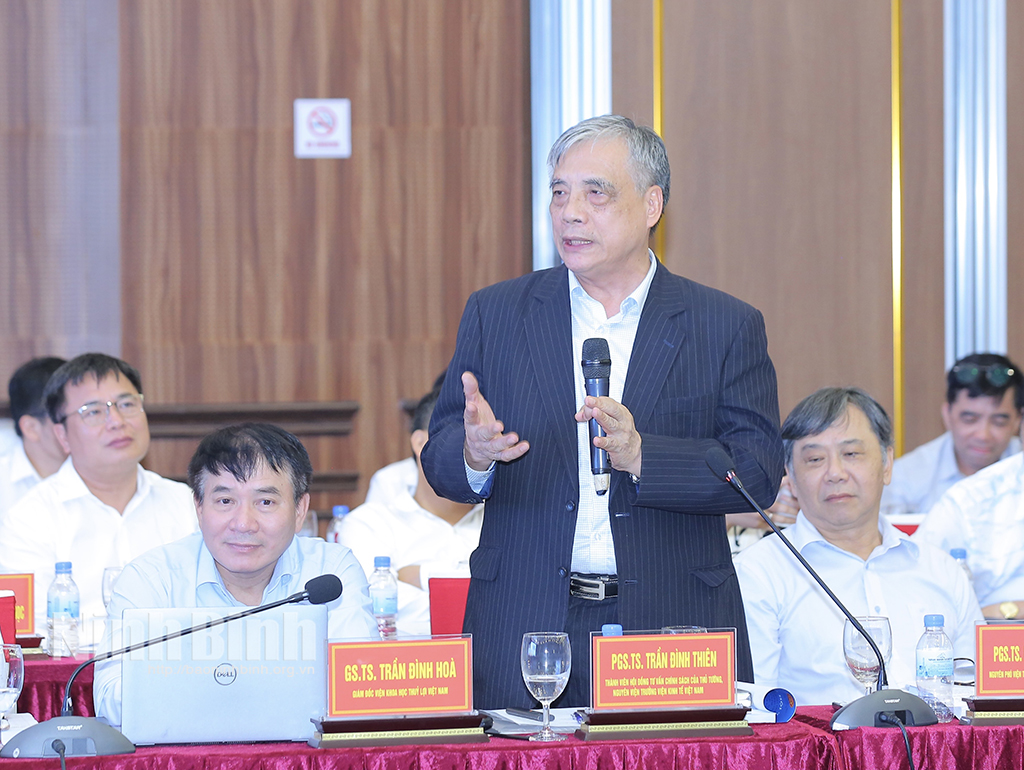
Focusing on training high-quality human resources, integrating digital technology and artificial intelligence is also a key factor to build this region into an international-class human resource training centre, Thien suggested.
Nguyen Duc Toan, Director of the Vietnam Sea and Islands Administration, and Architect Tran Ngoc Chinh shared their views on the potential for marine economic development.
These experts proposed developing sustainable marine tourism and services, modern and green maritime logistics, sustainable aquaculture and renewable energy. Developing the coastal economic corridor along the Quang Ninh - Hai Phong - Thai Binh - Nam Dinh - Ninh Binh axis is considered an important strategy.
In addition, experts also emphasised the development of high-tech industry according to the industrial ecosystem mindset, growth based on science and technology, innovation and digital transformation.
Regarding agriculture, experts agreed on the need to switch to an ecological agricultural model, applying high technology, not only ensuring food security but also protecting the environment, landscape and responding to climate change.
It is necessary to preserve and promote the cultural identity, agricultural heritage values, and build plans to zone off rural areas, craft villages associated with tourism development.
Vision until 2050
In his closing speech at the seminar, Secretary of the Ninh Binh Provincial Party Committee Doan Minh Huan emphasised three core points in the strategic orientation for the development of newly-established Ninh Binh province.
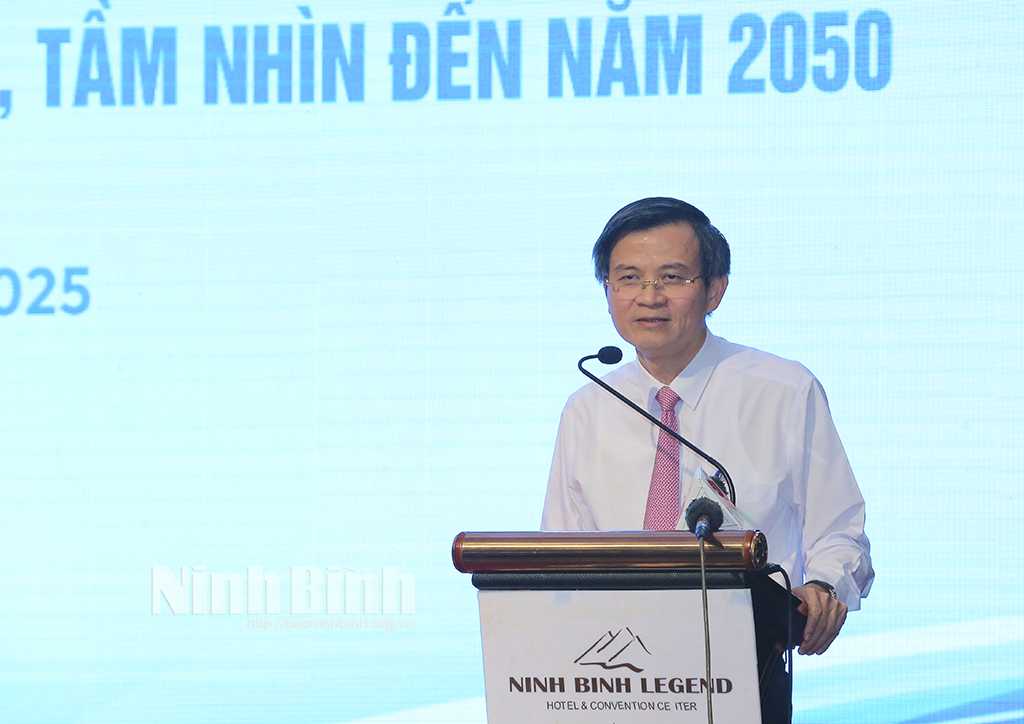
Firstly, it is necessary to comprehensively identify the invisible and tangible potential, dynamic and static advantages of the three provinces. In particular, the dynamic advantage based on the thinking and readiness of the new province, along with the transformation of the thinking of the leadership team, will create a resonant strength, overcoming the limitations of geographical space and old thinking.
Secondly, it is a must to restructure the dynamic development regions and resolve the connection between urban and rural areas when forming new development corridors.
Reviewing, adjusting, supplementing and merging the planning of the three provinces is an urgent task, needing to inherit and continue the old planning but must follow the new thinking, creating a more open development space.
Thirdly, it is essential to clearly position the role and position of new Ninh Binh province in the Red River Delta region, in the urban network, especially with the megacities of Hanoi and Hai Phong, as well as in the national and international territorial structure.
Huan also emphasised the transformation of static resources such as geographical location, heritage resources, culture, humanity, and land into development drivers, while at the same time linking them with green growth and sustainable development. The goal by 2035 is that Ninh Binh province will become a centrally-governed city as a dual urban area, not a satellite or counterweight city, but an urban area that compensates for the shortcomings of other megacities. Ninh Binh will develop diverse aspects such as tourism, ecological logistics, entertainment industry, resorts, education, science and technology to reach international standards, he added.






